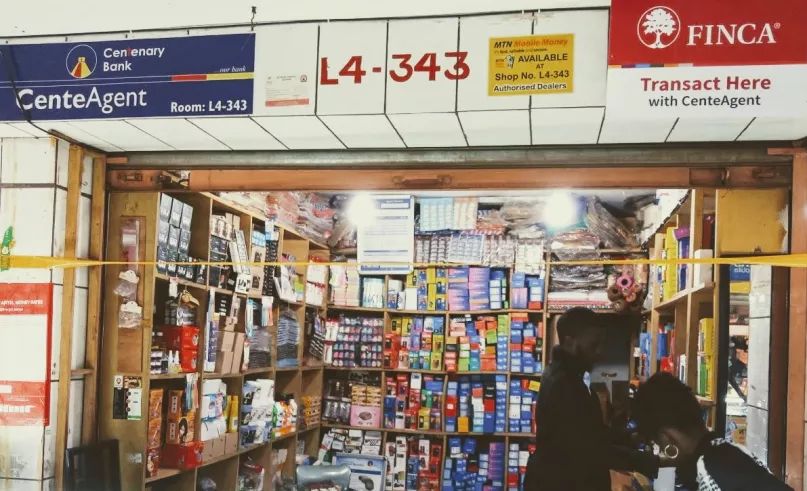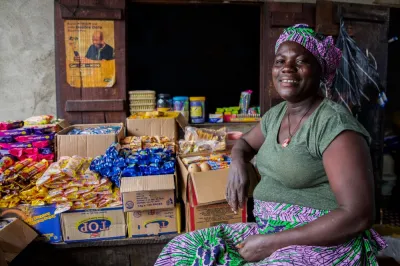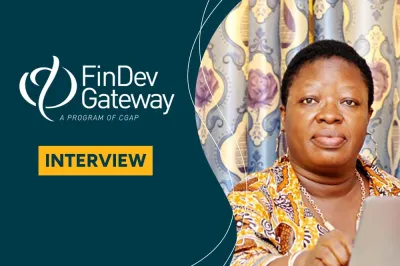How To Get a Historic Bilateral Deal to Share Agent Banking Infrastructure

On a warm quiet morning in Uganda last October, FINCA kicked off retail cash-in and cash-out transactions through agents of its traditional rival, Centenary Bank. It was a low-key event, muffled by COVID-19 restrictions, that did not reflect the extraordinary nature of the occasion.
Enticing two competing financial institutions to work together is not an easy task. And it is particularly challenging if the rivals operate in the same geographic environment and the proposal is to share infrastructure in a way that might advance the interests of one of them. Our team at Scale2Save had already experienced rejection when we made a similar proposition to two of our partners in another country. So, this time we went in better armed to respond to the preliminary objections we might anticipate to our proposal for FINCA Uganda and Centenary Bank to share agency banking infrastructure.
The rivals who became partners
FINCA Uganda, a member of the FINCA Impact Finance global network, is a leading microfinance deposit-taking institution regulated by the central bank. FINCA has been successful at implementing agent banking in Tanzania, Zambia and the Democratic Republic of Congo. Unfortunately, in Uganda, FINCA is not allowed to offer agent banking services, as the agent banking regulation only allows tier-one and tier-two financial institutions to do so, and FINCA Uganda is categorized as tier-three. The institution has been involved in efforts with several other tier-three MFIs that have been trying to lobby with the central bank for a review of the regulations.
Centenary Bank, on the other hand, is the country’s leading commercial microfinance bank, serving more than 1.8 million consumers. Its reputation was built in rural development banking and serving the Catholic Church, which is its single largest shareholder. The bank has evolved and now attends to the needs of a wider range of retail and corporate customers through an expanded product portfolio. Centenary was among the first banks in the country to roll out agent banking operations, and currently boasts the largest network of agents of any bank in Uganda.
Centenary Bank is a founding member of the Agency Banking Company (ABC), a multi-laterally shared agency banking implementation managed under the Uganda Bankers Association (UBA), the umbrella lobby for financial institutions in Uganda. It contributes more than 50 percent of its existing 5,000 strong agency banking network under the ABC arrangement – thus already enabling multiple financial institutions access to its own successful channel. Due to the restrictions already mentioned above, FINCA is not allowed to participate in this effort.
What is in it for the partners?
The motivation for FINCA was clear. An agency banking operation would provide FINCA the opportunity to compete for new customers on equal footing with other FSPs and extend service distribution to existing customers. FINCA would be able to complete the customer journey puzzle, using its mobile banking channel to on-board customers and immediately give them access to their accounts via an agency banking network that is already ubiquitous and fully operational.
But what motivated Centenary Bank to offer its investment, which cost at least $1 million to roll out, to be unreservedly accessed by a third-party institution and its customers? Though the bank would receive marginal revenue gain, the primary factor for Centenary was the potential benefits for its agents. Through this partnership, Centenary could optimize its agents’ capacity, offering them improved returns on their investment and thus helping Centenary to attract and retain better quality agents. By working with FINCA, Centenary can also test and adjust its operational capability to support other microfinance deposit-taking institutions (MDIs), which could give it the opportunity in the future to further improve agent returns. This is an arrangement that the ABC is currently not able to facilitate.
What were the enablers?
Organizational Chemistry: During the negotiations of the Centenary-FINCA deal, we were lucky that both organizations’ CEOs had great camaraderie, which had a reverberating effect on the rest of the rank and file in the two institutions, leading to great working chemistry. Outstanding issues that would ordinarily get in the way of the preliminary and technical engagements were quickly resolved.
Product and Technology Design: Discussions included technical design elements and commercial aspects related to pricing and market engagement. Eventually, a decision was made to limit provision of FINCA services to cash-in and cash-out payments only. Both parties considered third-party customer on-boarding at the agent a touchy issue, both from a competitor as well as regulatory perspective, so its exclusion from the offer helped them accept the agreement.
Regulatory Support: The central bank was surprisingly supportive of the agreement and made its team available to give technical advice to the partners to help get through the regulatory hoops and launch the service, also ensuring of course that the provisions of the law and regulations were adhered to. Finally, the central bank gave its approval.
The net effect
Six months into the launch of the service, transactions have an over 95 percent success rate – considered high for such a novel deployment. More than $7 million worth of transactions have been made by FINCA customers in at least 1,500 Centenary Bank agents spread across the country. Up to 80 percent of these transactions have been deposit transactions, underscoring the critical role distribution plays in catalyzing savings.
Both sides are perceiving the benefits. FINCA customers now have improved access to their accounts in remote locations, making saving and loan repayments easier, which in turn makes it easier to maintain a healthy credit score. Meanwhile, Centenary Bank agents are happy to benefit from additional transactions, which could eventually encourage further investments in the agency banking channel. Centenary Bank also gets a proven test case on supporting MFIs/MDIs and other unregulated entities through their banking infrastructure.


